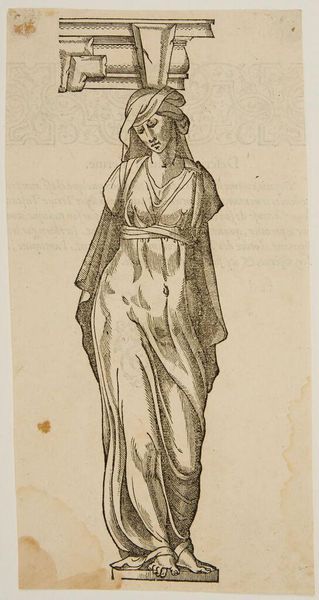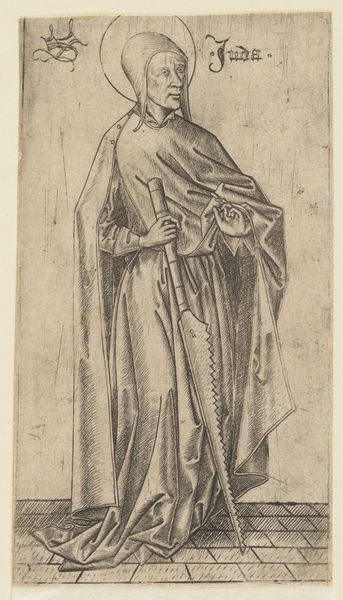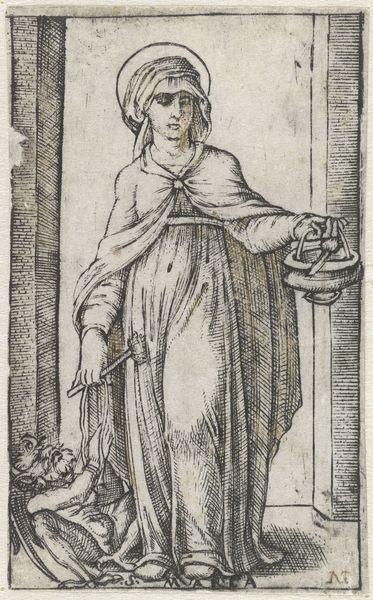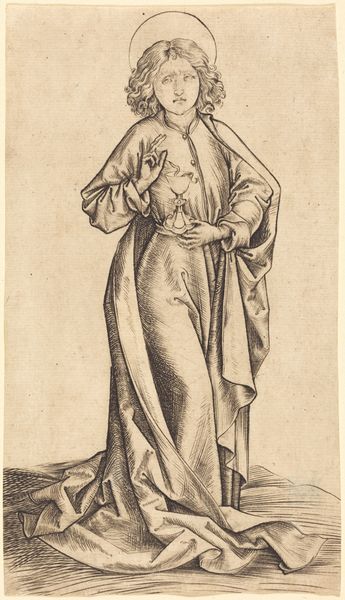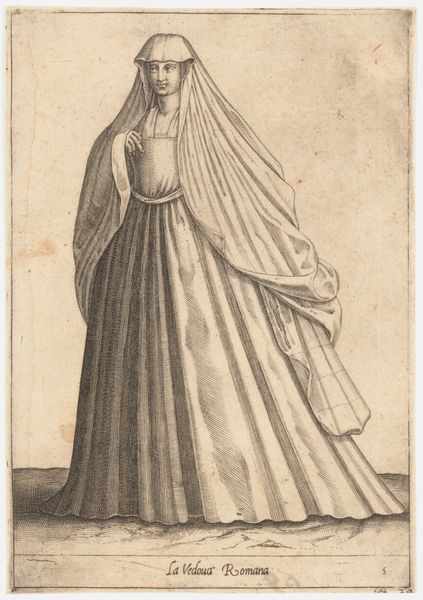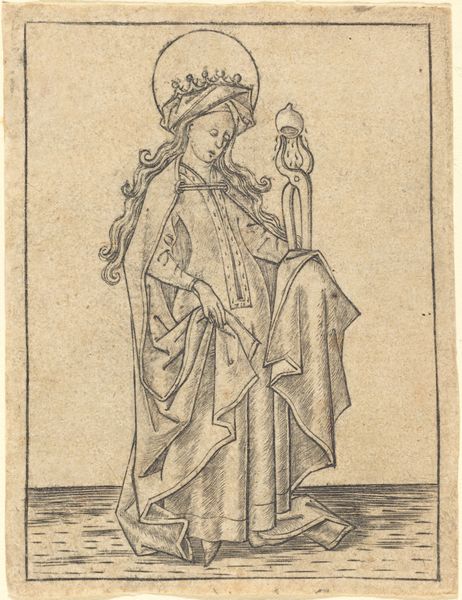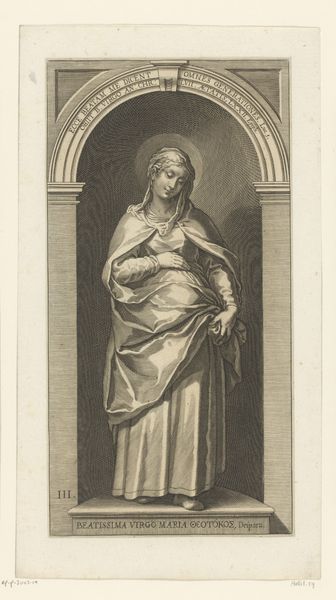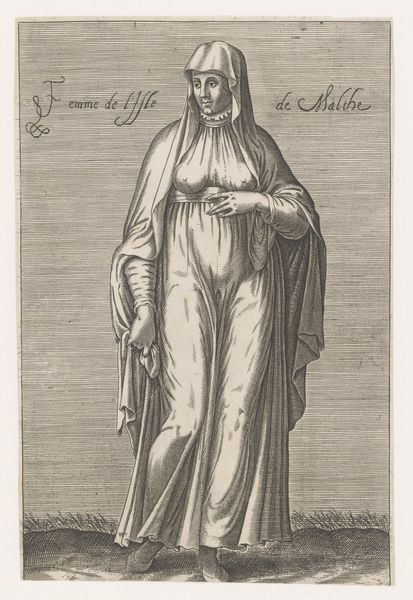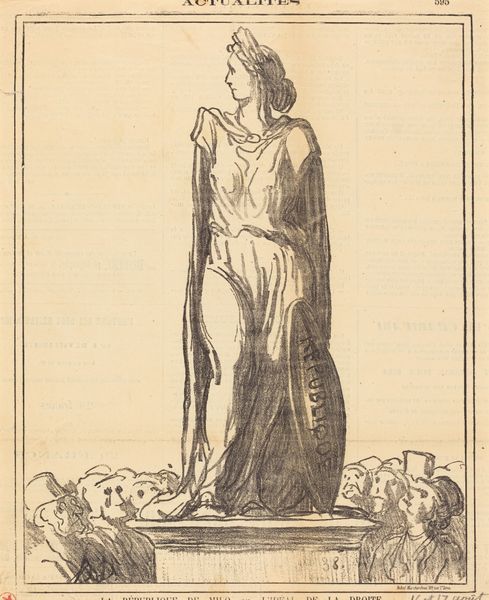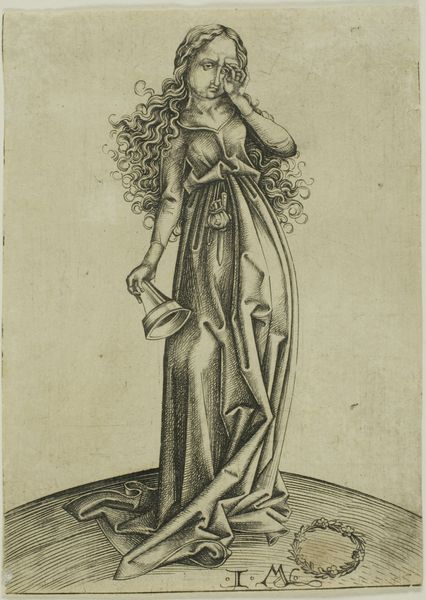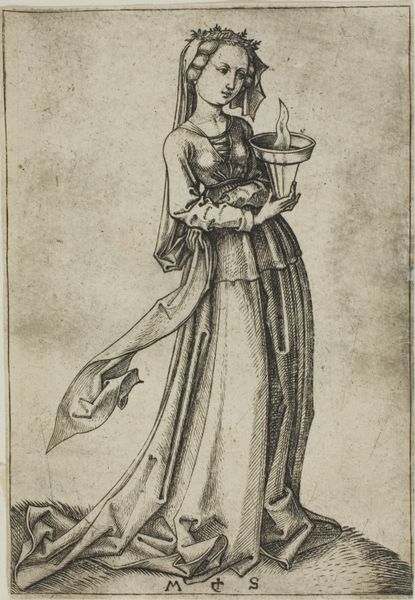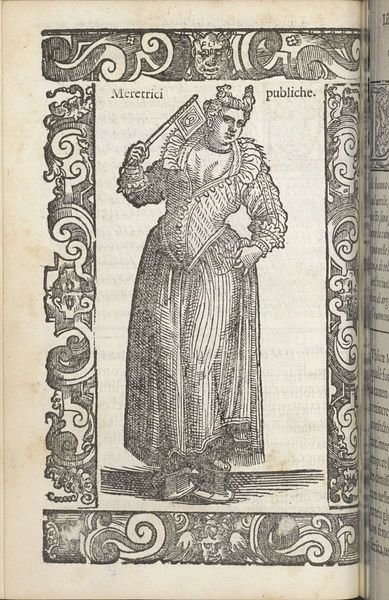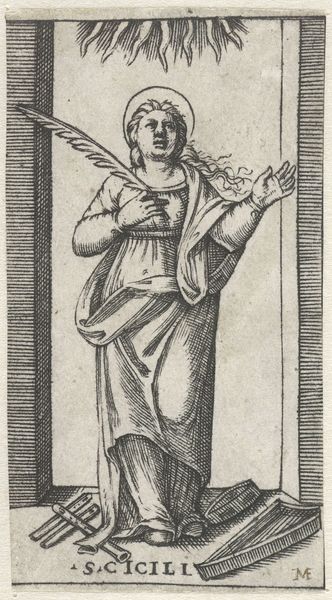
Maltese Woman from Le Navigationi nella Turchia, plate 61 from Woodcuts from Books of the XVI Century c. 1577 - 1937
0:00
0:00
drawing, print, paper, woodcut, engraving
#
portrait
#
drawing
# print
#
figuration
#
paper
#
11_renaissance
#
personal sketchbook
#
woodcut
#
history-painting
#
engraving
Dimensions: 164 × 97 mm (image); 222 × 171 mm (sheet)
Copyright: Public Domain
Curator: This woodcut, dating from around 1577 to 1937, is entitled "Maltese Woman" and comes from Assuerus Jansz Van Londerseel's "Le Navigationi nella Turchia." What are your first impressions? Editor: It feels stark, almost like a schematic drawing for a stage costume. The heavy outlines and minimal shading flatten the figure, creating a monumental but somewhat austere presence. Curator: Indeed. This print would have been one plate within a book offering insight into foreign dress and customs. Londerseel wasn’t necessarily trying to create a sensitive likeness; his task was to categorize and document. This print was designed for reproduction. Its existence speaks to a network of labor: from the artist's concept and rendering in wood to the printing process, to the bookseller who sold this book, and ultimately to the hands of someone using it for self-education, and perhaps colonial justification. Editor: And looking closer at the lines themselves, the hatching gives volume to the figure but is rendered so precisely. It’s clearly about defining form above all. The heavy use of line both describes the folds of fabric and creates an almost geometric underpinning. It is all about order and clarity. Curator: It's important to remember that the paper itself was a valuable commodity at the time and part of a system of knowledge production that shaped European views of other cultures. I’m struck by how a single image like this acted as a crucial element in forming social perceptions and influencing interactions on a global scale. The means of its distribution and consumption shaped not just individual understanding but whole colonial efforts. Editor: Yes, but let's not forget the powerful effect of that controlled linear style! There’s a rigor and deliberate character to it. The figure feels less like a spontaneous sketch of a real person and more of an emblem—a constructed idea. I'd like to better understand how this aesthetic operates within the conventions of the time and shapes our present understanding. Curator: A critical point. Reflecting on its process helps reveal both the print’s intended function and its wider historical importance. Editor: Exactly! This detailed view has certainly focused my eye on how artful selection can shape a concept of identity across time and material constraints.
Comments
No comments
Be the first to comment and join the conversation on the ultimate creative platform.
